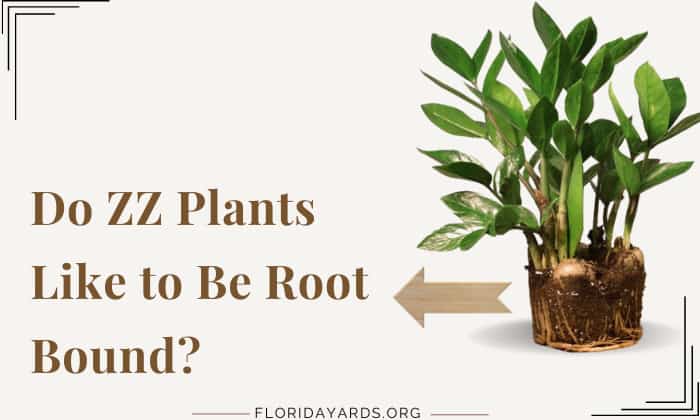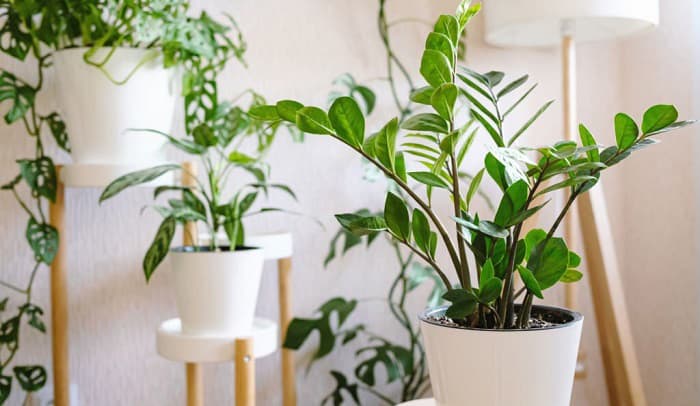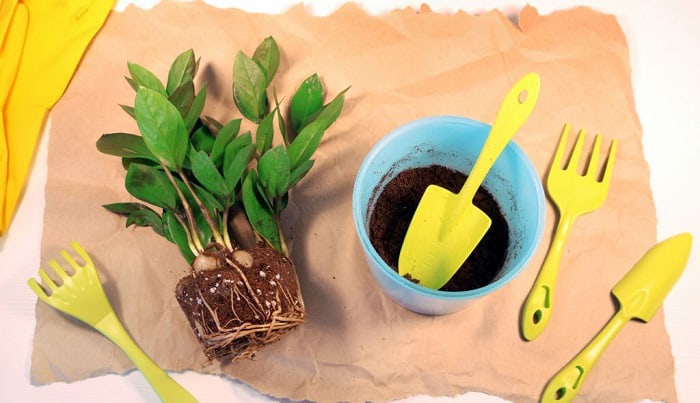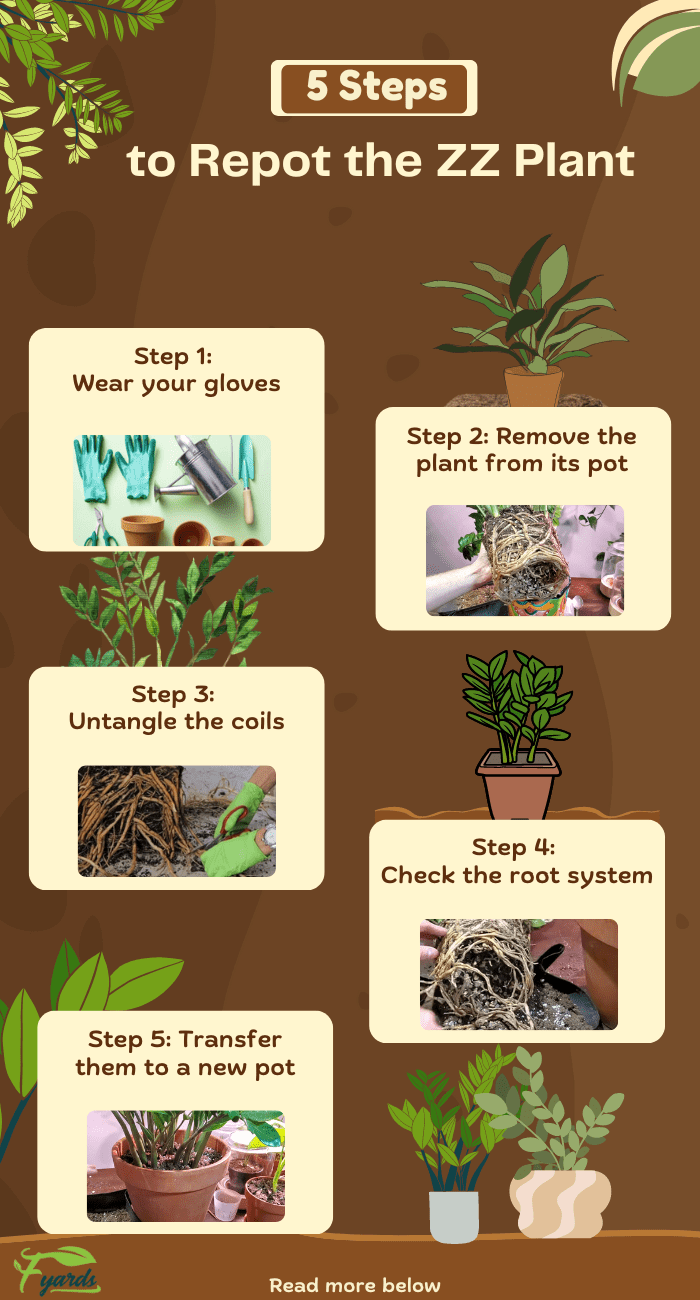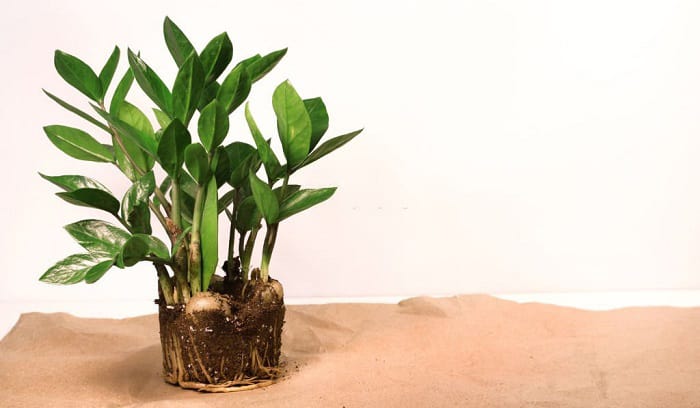ZZ plants (Zamioculcas zamifolia), also known as Zanzibar gems, are quite popular, especially for beginners, as they are pretty easy to care for. They can take some time to grow, but in about 2 to 3 years, they will begin to outgrow their pots, especially if the environmental conditions favor them. With this, one might think, do ZZ plants like to be root bound?
The simple answer is no. ZZ plants, or any plant for that matter, do not like being root-bound. Let’s find out why.
Table of Contents
What Does Being Root Bound Mean?
ZZ plants are a type of succulent, storing nutrients and water in their bulbous rhizomes underground. This feature allows them to tolerate drought and infrequent watering. As the plant matures and increases in size, so do its rhizomes and root system.
When a plant is root bound, its root system has outgrown its current container and has become heavily entangled with one another. Being crammed up in a small space, it can be difficult for the roots to absorb water and nutrients from the soil. This could also potentially lead to root rot and other diseases.
How Will You Know if Your ZZ Plant Needs Repotting?
There are instances wherein it might be difficult to judge whether a ZZ plant is already root bound or not without removing it from its pot and inspecting the ZZ plant root system.
However, if you don’t want to do that, here are some signs that you should watch out for:
- Roots are already coming out of the pot’s drainage holes or are peering through the soil’s surface.
- If you are using plastic pots, prominent bulges on the sides of the pot may be an indication that the ZZ plant bulb is already too big for its container.
- If you have been providing your plant everything it needs, but its growth seems to be excruciatingly slow, then it might be time to repot your ZZ plant.
- ZZ plant root bound might also have yellow leaves due to the lack of nutrient absorption.
How Do You Repot Your ZZ Plant?
Repotting ZZ plant is the most common way of addressing overcrowding issues. Here is a step-by-step guide on how to do it.
Materials:
- Trowel
- Gloves
- Scissors
- Knife
- Cultivator
- Potting soil
- Pot
Step 1: Wear your gloves
ZZ plant secretions contain calcium oxalate crystals which can cause skin irritation and burning sensations.
Work away from pets and small children, and don’t forget to use gloves, especially if you have sensitive skin.
Step 2: Remove the plant from its pot
While holding the base of the main stem, tilt the pot to one side and gently wiggle the plant to loosen up the soil.
If it’s too compact, do not forcefully pull the stem out. Instead, tap the sides of the pot or use a trowel to dig the soil around the inner rim and then carefully slide the plant out.
Step 3: Untangle the coils
Shake the plant to remove some old soil and work your way to untangle the roots. The root ball can be soaked in water to make it more pliable. For cases of heavily root-bound plants, you can use a clean knife to cut off some of the outer roots.
Step 4: Check the root system
Inspect the ZZ plant rhizome and root system to ensure no rotting portions. If you see roots that look brown and mushy, cut them off using clean scissors to prevent further damage to the plant.
Step 5: Transfer them to a new pot
Choose a pot that’s one size bigger than the previous pot to give your plant enough space to grow. Since ZZ plants are susceptible to root rot, fill it with soil that allows proper drainage and then transplant ZZ plant into its new container.
Are There Other Ways to Fix Root Bound ZZ Plants?
When you repot your ZZ plant to a larger container, its roots and rhizomes will have more room to develop, which will result in a bigger plant.
However, if you are not keen on having a ZZ plant that is too big for your space, here are other options to fix root-bound plants and overcrowding issues.
1. Root Pruning
Root pruning is an option when you want to maintain your plant’s size and keep using your favorite pot. This method works when there is still enough space for the plant’s rhizomes, and it’s just the roots that have overgrown.
Trimming off roots might sound scary for beginners. Still, seasoned gardeners swear by root pruning to help maintain the overall health of their plants.
- To prune the roots, carefully remove the ZZ plant from its pot and check the wound-up roots.
- Then, using a pair of garden shears or a sharp knife, cut around the root ball and through the matted roots at the bottom portion of the plant.
- Loosen up the soil using a cultivator and gently comb through the entangled roots.
- Add fresh potting soil and return your ZZ plant to its original pot.
2. Dividing the ZZ Plant
Another option to alleviate overcrowding in your ZZ plant pot and create new plants is to divide the rhizomes.
- To do this, tilt the pot on one side and gently remove the ZZ plant. The bulbous structures you will see at the base of the plant are the rhizomes.
- Look for rhizomes that have their roots and stems and are not fully connected to other rhizomes; these will be the ones that are the easiest to cut and separate.
- Suppose your ZZ plant rhizomes are fully connected and clustered into one large rhizome; carefully assess where to cut.
- Using a sharp, clean knife, separate them into individual portions of relatively the same size, all with healthy stems and roots.
- Once you have divided your ZZ plant bulb, allow the cut parts to dry up for a few hours before replanting them in soil with good drainage.
Conclusion
Do ZZ plants like to be crowded? Do ZZ plants like to be root bound? Absolutely not.
ZZ plants are some of the least demanding houseplants when it comes to care and attention. They will do just fine under low light conditions and can tolerate infrequent watering.
However, it is best to check on it from time to time and always be on the lookout for tell-tale signs of overcrowding or root rot, so you’ll know when to repot ZZ plant and keep them healthy for a long time.
Read more: Steps to repot a snake plant and jade plants.

Hi, I am William – Floridayards’ digital content creator. My job is to find answers to all your concerns with thorough research and our team’s expert advice. I will also bring you honest reviews on the best products and equipment for raising your beautiful garden. Please look forward to our work!


